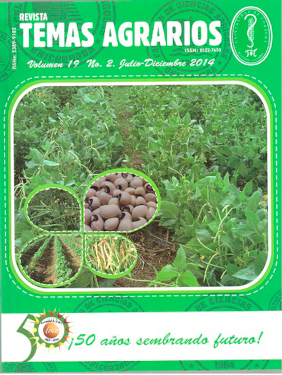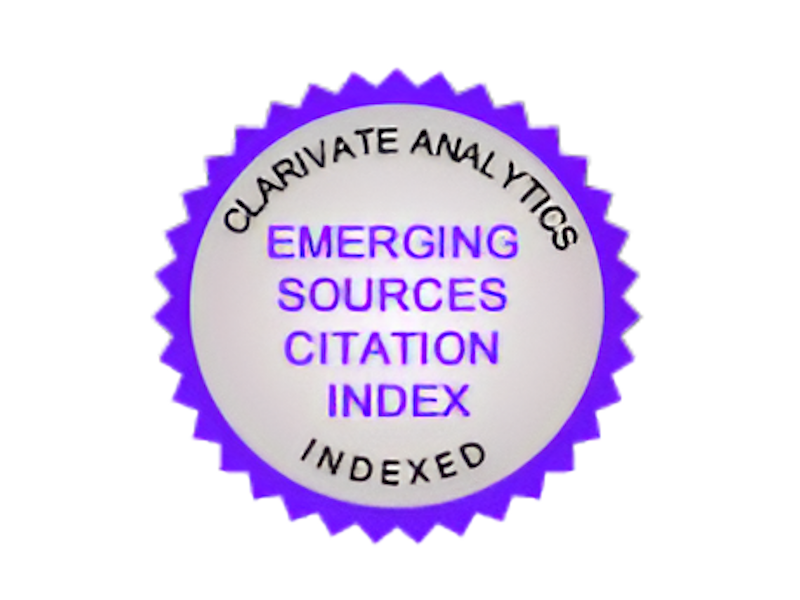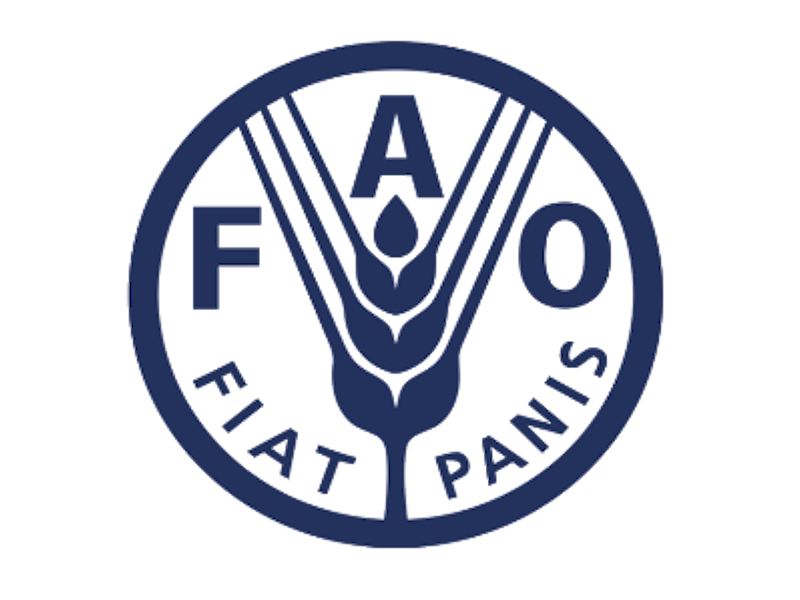Respuesta vegetal de acacia decurrens a la inoculación con rizobacterias promotoras de crecimiento vegetal bajo estrés salino
Vegetal response of Acacia decurrens to inoculation with plant growth promoting rhizobacteria under salt stress
Cómo citar
Sánchez, D., & Bonilla, R. (2014). Respuesta vegetal de acacia decurrens a la inoculación con rizobacterias promotoras de crecimiento vegetal bajo estrés salino. Temas Agrarios, 19(2), 159-172. https://doi.org/10.21897/rta.v19i2.731
Dimensions
Licencia

Esta obra está bajo una licencia internacional Creative Commons Atribución-NoComercial 4.0.
Mostrar biografía de los autores
Visitas del artículo 905 | Visitas PDF
Descargas
Los datos de descarga todavía no están disponibles.
- Babana, A., Dicko, A., Maïga, K. and Traoré, D. 2013. Characterization of rock phosphate-solubilizing microorganisms isolated from wheat (Triticum aestivum L.) rhizosphere in Mali. Journal of Mıcrobıology and Mıcrobıal Research 1(1):1-6.
- Bacilio, M., Rodriguez, H., Moreno, M., Hernandez, J. and Bashan, Y. 2004. Mitigation of salt stress in wheat seedlings by a Azospirillum lipoferum. Biology and Fertility of Soils 40:188-193.
- Bashan, Y., Holguin, G. and De-Bashan, L. 2004. Azospirillum plant relationships: physiological, molecular, agricultural, and environmental advances (1997- 2003). Canadian Journal of Microbiology 50(8): p521-577.
- Bhattacharyya, P. and Jha, D. 2012. Plant growth-promoting rhizobacteria (PGPR): emergence in agriculture. World Journal of Microbiology and Biotechnology 28(4):1327-1350.
- Calvachi, B. 2012. Los ecosistemas semisecos del altiplano cundiboyacense, bioma azonal singular de Colombia, en gran riesgo de desaparición. Mutis 2(2):26-59.
- Chen, Y., Rehha, P., Arun, A., Shen, F., Lai, W. and Young, C. 2006. Phosphate solubilizing bacteria from subtropical soil and their Tricalcium phosphatesolubilizing abilities. Applied Soil Ecology 34:33-41.
- Costa, E., Nóbrega, R., Carvalho, F., Trochmann, A., Ferreira, L. and Moreira, F. 2013. Plant growth promotion and genetic diversity of bacteria isolated from cowpea nodules. Pesquisa Agropecuária Brasileira 48(9):1275-1284.
- Das-Neves, J., Ferreira, L., Vaz, M. and Gazarini, L. 2008. Gas exchange in the salt marsh species Atriplex portulacoides L. and Limoniastrum monopetalum L. in Southern Portugal. Acta Physiologiae Plantarum 30:91-97.
- Dubois, M., Gilles, K., Hamilton, J., Rebers, P. and Smith, F. 1956. Colorimetric method for determination of sugars and related substances. Analytical Chemistry 28(3):352-356.
- Fiske, C. and Subbaro Y. 1925. The colorimetric determination of phosphorus. Journal of Biological Chemistry 66:375 p.
- Ghosh, S., Sengupta, C., Maiti, T. and Basu, P. 2008. Production of 3-indolylacetic acid in root nodules and culture by a Rhizobium species isolated from root nodules of the leguminous pulse Phaseolus mungo. Folia Microbiological 53:351-355
- Glickman, E. and Dessaux, Y. 1995. A Critical examination of the specificity of the salkowsky reagent for indolic compounds produced by phytopathogenic bacteria. Applied and Environmental Microbiology 61(2):793-796.
- Goswami, D., Dhandhukia, P., Patel, P. and Thakker, J. 2014. Screening of PGPR from saline desert of Kutch: Growth promotion in Arachis hypogeal Bacillus licheniformis A2. Microbiological Research 169(1):66-75.
- Hajlaoui, H., Denden, M. and Bouslama, M. 2006. Effet du chlorure de sodium sur les critèresmorpho-physiologiques et productifs du poischiche (Cicer arietinum L.).]– Annales de Institut National de Recherche en Génie Rural Eaux et Forêts 8:171-187.
- Illmer, P. and Schineer, F. 1995. Solubilization of inorganic calcium phosphates solubilization mechanisms. Soil Biology and Biochemistry 27(3):257-263.
- Joseph, B., Ranjan, P. and Lawrence, R. 2007. Characterization of plant growth promoting rhizobacteria associated with chickpea (Cicer arietinum L.). International Journal of Plant Production (1):141-152.
- Kang, S., Khan, A., Waqas, M., You, Y., Kim, J., Kim, J., Hamayun, M and Lee, I. 2014. Plant growth-promoting rizobacteria reduce adverse effects of salinity and osmotic stress by regulating phytohormones and antioxidants in Cucumis sativus. Journal of Plant Interactions 9(1):673-682.
- Kavamura, V., Santos, S., Silva, J., Parma, M., Ávila, L., Visconti, A., Zucchi, T., Taketania, R., Andreote, F. and Melo, I. 2013. Screening of Brazilian cacti rhizobacteria for plant growth promotion under drought. Microbiological Research 168(4):183-191.
- Lamz, A. y González, M. 2013. La salinidad como problema en la agricultura: la mejora vegetal una solución inmediata. Cultivos Tropicales 34(4):31-42.
- Martínez, L. y Navia, J. 2011. Evaluación del comportamiento de algunas especies arbóreas y arbustivas bajo dos distancias de siembra. Revista de Ciencias Agrícolas 28(2):129-36.
- Martínez, L. y Navia, J. 2012. Evaluación del comportamiento de algunas especies arbóreas y arbustivas bajo dos distancias de siembra. Ciencias Agrícolas 28(2):129-136.
- Mohamed, H. and Gomaa, E. 2012. Effect of plant growth promoting Bacillus subtilis and Pseudomonas fluorescens on growth and pigment composition of radish plants (Raphanus sativus) under NaCl stress. Photosynthetica 50(2):263-272.
- Morales, Y., Juarez, D., Aragón, C., Mascarua, M., Bustillos, M., Fuentes, L. and Muñoz, J. 2011. Growth response of maize plantlets inoculated with Enterobacter spp., as a model for alternative agriculture. Revista Argentina de Microbiología 43(1):287-293.
- Muñoz, D., Calvache, D. y Yela, J. 2013. Especies forestales con potencial agroforestal para las zonas altas en el departamento de Nariño. Revista de Ciencias Agrícolas 30(1):38-53.
- Oliveira, C., Alves, V., Marriel, I., Gomes, E., Scotti, M., Carneiro, N., Guimarães R., Shaffert R. and Sá, N. 2009. Phosphate solubilizing microorganisms isolated from rhizosphere of maize cultivated in an oxisol of the Brazilian Cerrado Biome. Soil Biology and Biochemistry 41(9):1782-1787.
- Paredes, M. y Espinosa, D. 2010. Ácidos orgánicos producidos por rizobacterias que solubilizan fosfato: una revisión crítica. Terra Latinoamericana 28(1):61- 70.
- Parida, S. and Das, A. 2005. Salt tolerance and salinity effects on plants. Ecotoxicol Environmental Safety. 60: 324-349.
- Percival, Y., Himmel, M. and Mielenz, J. 2006. Outlook for cellulase improvement: screening and selection strategies. Biotechnology Advances 24(5):452-481.
- Ramírez, M., Piña, Y., Ordoñez, L., Bracho, B. y García, D. 2014. Efecto del NaCl en plántulas de curarí (Tabebuia serratifolia) en condiciones de laboratorio. Pastos y Forrajes 37(1):17-23.
- Rastelli, E., Giraffa, G., Carminati, D., Parolari, G. and Barbuti, S. 2005. Identification and characterisation of halotolerant bacteria in spoiled dry-cured hams. Meat science 70(2):241-246.
- Reis, F., Silva, L., Reis, V. e Döbereiner, J. 2000. Ocorrência de bactérias diazotróficas em diferentes genótipos de cana-deaçúcar. Pesquisa Agropecuária Brasileira 35(5):985-994.
- Sánchez, D., Gómez, R., Garrido, M. y Bonilla, R. 2012. Inoculación con bacterias promotoras de crecimiento vegetal en tomate bajo condiciones de invernadero. Revista Mexicana de Ciencias Agrícolas 3(7):1401-1415.
- Sandhya, V., Ali, S., Venkateswarlu, B., Reddy, G. and Grover, M. 2010. Effect of osmotic stress on plant growth promoting Pseudomonas spp. Archives of Microbiology 192(10):867-876.
- Selvakumar, G., Kundu, S., Joshi, P., Nazim, S., Gupta, A., Mishra, P. and Gupta, H. 2008. Characterization of a cold-tolerant plant growth-promoting bacterium Pantoea dispersa 1A isolated from a sub-alpine soil in the North Western Indian Himalayas. World Journal of Microbiology and Biotechnology 24(7):955-960.
- Sindhu, S. and Dadarwal, K. 2001. Chitinolytic and cellulolytic Pseudomonas sp. antagonistic to fungal pathogens enhances nodulation by Mesorhizobium sp. Cicer in chickpea. Microbiological Research 156:353-358.
- Son, H., Park, G., Cha, M. and Heo, M. 2006. Solubilization of insoluble inorganic phosphates by a novel salt-and pHtolerant Pantoea agglomerans R-42 isolated from soybean rhizosphere. Bioresource Technology 97(2):204-210.
- Taiz, L. and Zeiger, E. 2010. Plant Physiology. Edition 5º.(USA): Sinauer Associates, Inc. Publishers, Maryland. USA, p756-770.
- Tank, N. and Saraf, M. 2010. Salinity-resistant plant growth promoting rhizobacteria ameliorates sodium chloride stress on tomato plants. Journal of Plant Interactions. 5(1):51-58.
- Upadhyay, S., Singh, J. and Singh, D. 2011. Exopolysaccharide-producing plant growth-promoting rhizobacteria under salinity condition. Pedosphere 21(2):214-222.
- Walpola, B. and Yoon, M. 2013. In vitro solubilization of inorganic phosphates by phosphate solubilizing microorganisms. African Journal of Microbiology Research. 7(27):3534-3541.
- Wani, P., Khan, M. and Zaidi, A. 2007. Effect of metal tolerant plant growth promoting Bradyrhizobium sp. (vigna) on growth, symbiosis, seed yield and metal uptake by green gram plants. Chemosphere 70:36-45.
- Yan, H. and Ji, L. 2013. Improvement of plant growth and seed yield in Jatropha curcas by a novel nitrogen-fixing root associated Enterobacter species. Biotechnology for Biofuels 6:140.
- Yasmm, F., Othman, R., Saad, M. and Sijam, K. 2007. Screening for beneficial properties of Rhizobacteria isolated from sweet potato rizosphere. Journal of Biotechnology 6(1):49-52.
- Zahir, Z., Ghani, U., Naveed, M., Nadeem, S. and Asghar, H. 2009. Comparative effectiveness of Pseudomonas and Serratia sp. containing ACC-deaminase for improving growth and yield of wheat (Triticum aestivum L.) under-salt stressed conditions. Archives of Microbiology 191:415-424.
- Zaidi, A., Khan, M., Ahemad, M. and Oves, M. 2009. Plant growth promotion by phosphate solubilizing bacteria. Acta Microbiological et Immunological Hungarica 56(3):263-284.




















